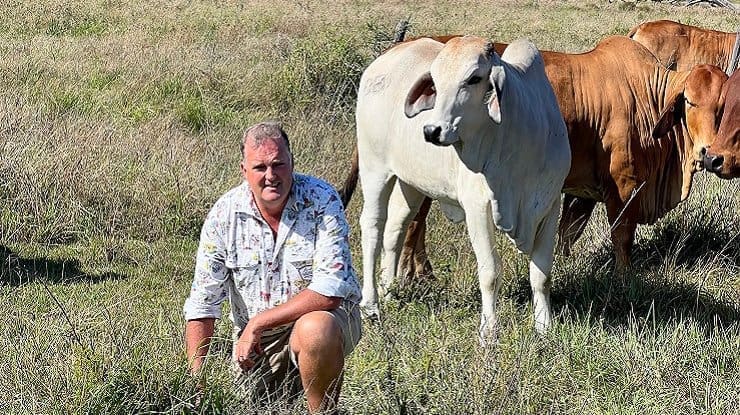EXPERIENCED pasture agronomists are saying there has never been a better time to plant improved pastures in the north than this spring and summer.
With plentiful standing pasture, a high rainfall forecast and excellent subsoil moisture, producers are being urged to take advantage of the unique seasonal conditions to get as much improved pasture work done as possible. Good subsoil moisture combined with good follow-up rain is key to successful establishment, and producers in Queensland and northern NSW are likely to have this in spades this year.
“I haven’t seen as favourable conditions as this for more than 10 years – now is the time to get new pasture in, the odds really are in producers’ favour,” Rockhampton agronomist Ross Newman said.
“The key thing is to reduce competition with other plants because it’s hard to get them established when they’re competing with something else for their water.
“You can reduce competition with either mechanical or chemical interventions, then plant into the mulch with a good legume-based species mix, and then let the rain do its work. The payback from a good established new pasture is very high.”
The feedbase in northern Australia is underproductive in many districts due to declining soil nutrient availability, especially in sown pastures, and a lack of persistent legumes in the paddock. The absence of legumes in pasture systems leads to low nitrogen availability in soils resulting in poor pasture and livestock production.
Improving pastures with legumes can increase nitrogen availability through nitrogen fixation, increase pasture and livestock production, and help sequester carbon.
“With the current potential for surplus feed this season, producers should take the opportunity to take a pasture out of production, given the feedbase is potentially covered,” Ross said.
“Given the wet conditions, pasture quality is down, so the advantage of having sown legumes really comes to the fore.”
Having soil moisture and follow-up rainfall is only part of the equation for the successful establishment of legumes into existing grass-pastures.
Four tips to establish legumes
- Choose the right paddock: investing in improved species can be a significant investment, so it is best to improve your better country where the legumes will make the biggest difference.
- Paddock preparation: legume (and tropical grass) seeds are small. Therefore, preparation is a must to ensure a fine-but-firm seedbed for good seed-to-soil contact and accurate depth placement. Weed control should also be undertaken as few selective herbicides are registered for after planting application.
- Species selection: get professional advice and select the correct species for your environment (soil type, rainfall and temperature) and intended use (short- or long-term pastures).
- Nutrition: before undertaking a pasture improvement project, soil tests should be taken to understand the nutritional and structural constraints of the paddock. Starter fertiliser incorporating nitrogen (for grasses) and phosphorus (for legumes) should be considered to help establish the pasture.
“As temperatures rise and tropical and sub-tropical zones move further south, sowing practices and species selection will be essential for legume persistence,” Ross said.
“It’s important to establish the correct plant population of a locally adapted species and variety.”
Queensland Department of Agriculture and Fisheries (DAF) sown pasture agronomists Stuart Buck and Gavin Peck have also noticed that interest in perennial legumes is increasing across central and southern Queensland.
“Many producers are planning to sow perennial legumes for the first time using a range of legume types.
“Desmanthus is popular in heavier clay soils whereas stylos are also popular, with Caatinga stylo being planted in sown pasture situations on medium to heavier clay soil types.
“Leucaena is another perennial legume being sown on the higher productivity soils, and butterfly pea on heavy clay soils in central Queensland.”
MLA Feedbase Program Manager Dr Allan Peake said some of the research done by DAF and others have shown that a well-established, well-managed legume can double productivity of some paddocks.
“Producers who are finding it hard to buy more country are starting to realise that they can make a smaller investment and get big improvements to productivity on their existing farm,” Allan said.
“It’s important to find a local expert and get the best advice on establishing legumes to make the most of your investment.”
Persistent legumes such as desmanthus, leucaena or stylo can lead to improved pasture production and quality thereby increasing livestock live weight gain. With the forecast for wet spring and excellent stored soil moisture, it will be interesting to see how many producers pull a paddock out of production to improve.
Source: MLA

